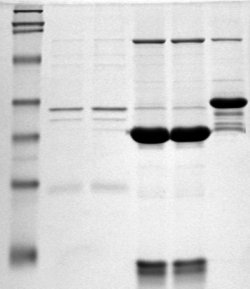The University of Glasgow has summarily dismissed my request for information on publisher licences /pmr/2014/03/04/my-foi-request-to-the-university-of-glasgow-has-left-me-speechless-they-do-not-know-anything-about-publishers-or-the-licences-they-sign/. Response from the Twittersphere has been incredulous. Prof. Charles Oppenheim – and expert in UK libraries opined “makes no sense” and advised “you have to appeal”.
So I’m appealing. I’ve not done this before. The WhatDoTheyKnow team is tremendous – they advise that this may take some time and if I don’t get a reply I can go to the Scottish Information Commissioner. So here’s my appeal (hyperlink within gives all correspondence)
Everything is public. So the University of Glasgow may be interested in how the citizenry, whose taxes fund the University, views this inability to manage core information on an expensive and legally critically business.
From: Peter Murray-Rust
4 March 2014
Please pass this on to the person who conducts Freedom of
Information reviews.
I am writing to request an internal review of University of
Glasgow’s handling of my FOI request ‘Licences with subscription
publishers forbidding content mining’.
I asked for information about the University’s licences with
academic publishers and was rejected on the grounds that the
University does not hold the information. This is completely
unacceptable since:
* all UK universities sign multiple licences with multiple
publishers every year. (Worldwide this is a 10 billion GBP
business)
* the University has a legal duty of care to maintain this
information
* the terms of many licences legally require the University and its
staff to conform to certain conditions. In a well-run university it
is unthinkable that the University does not hold these conditions
in a state where it can refer to them, possibly on a daily basis.
* most universities have sporadic cases where publishers claim that
the terms and conditions have not been observed. If these are
upheld it is probable that the University will lose the service it
has bought or that legal action will be taken against it (these
have happened elsewhere). Again it is inconceivable that a well-run
University does not hold a detailed record or such events.
I cannot interpret the answer I received in a positive light. I
hope the University understood the question as it is simple and
aligned to mainstream business activities. In which case it is
difficult to avoid the interpretation that the University does not
take FOI requests seriously or that it has something to hide.
WhatDoTheyKnow provides a public service and all my correspondence
is made public. I generally make a point of sharing this widely.
This has already resulted in confirmatory feedback that the
University has not answered satisfactorily.
A full history of my FOI request and all correspondence is
available on the Internet at this address:
https://www.whatdotheyknow.com/request/l…
Yours faithfully,
Peter Murray-Rust





